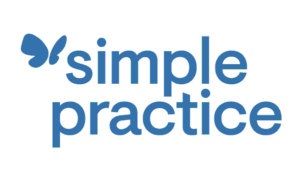Podcast: Play in new window | Download (Duration: 39:52 — 27.4MB)
Subscribe: Apple Podcasts | Spotify | Amazon Music
Everyone is familiar with reacting “in the heat of the moment,” but do we really understand what that means? Regulation basics include the protection or connection pathways to interpersonal relating.
In this episode, Sue Marriott and Ann Kelley unravel the mystery behind our nervous systems auto-pilot settings: protection vs connection. They simplify otherwise complex ideas by breaking in to 2 main points. Becoming aware whether you are in the Protection/Defense versus Connection/Secure pathways in our nervous system helps us manage them. Also, how does our story affect how we react and deal with conflict, and how can we mitigate it?
Tune in for this insightful and eye-opening discussion on our internal working models when interacting with others.
Show Notes about regulation and the protection or connection pathways:
00:00 Understanding our internal working model
01:05 Our body responds so much faster than our mind
03:11 The story we tell amplifies the body’s response
05:30 Story vs State: Protective System and the Relational Connective System
08:11 Awareness of our state and identifying the tells of a protective system
16:12 The awareness of self in the presence of another, the relational system
17:49 Our smartest brain
19:30 Tells when you’re in a relational, connective, and reflective place
25:21 Tolerating difficult emotions
29:32 Use your own name to identify yourself
31:24 Ways to calm your body down
36:40 Pre-emptive strike; we get defensive because of the threat inside of our body
39:26 Positive interpretation of a story
41:02 Conclusion
FULL TRANSCRIPT BELOW Keep scrolling –
Important Links:
Steve Porges, of course! We have tons of stuff on Polyvagal Theory in our library, but here is a previous episode with Dr. Steve Porges directly, plus it includes lot's of other resources click here!
Great regulation PDF resource by former guest, Deb Dana – Rhythm of Regulation
If you enjoyed this content, please send it on to somebody you feel could use it. Word of mouth helps the podcast grow so more people can benefit from this free resource. Sharing is caring they say, and so are ratings and reviews! 🙂
Help support Therapist Uncensored by becoming a Premium member. Join our private Neuronerd community and support the production of this indie-produced cis-female led show! As a bonus to helping spread this content, you will receive all episodes ad-free, deep dive premium episodes, access to reading and learning opportunities, extra episodes, plus of course discounts on everything we produce.
We love options so we are giving you a choice: if you are more visual and prefer direct communication and staying closely in touch with our activities join here: https//www.Patreon.com/therapistuncensored. If you love listening to additional content and prefer to easily download bonus audio content to your normal feed, join us here: https://www.therapistuncensored.com/join. Either way, you will be part of our Neuronerd community and receive all of the ad-free episodes and bonuses. Platinum level Neuronerds and Benefactors meet with us, personally and get their own thank you page on our website!
Protection or Connection Nervous System Regulation Pathways, Ep 166 Transcript
When we talk about understanding ourselves, we talk about it through understanding the spectrum and our internal working model. Let's simplify it. What do you think?
It's simplified but it's also going deeper. I would almost call it going deeper. We start getting interested in colors, up and down is it dorsal vagal, ventral vagal or whatever. Your idea of deep-diving into the basics of this is what I love about the way you talk about it because it feels so usable.
Recognizing what internal working model that we function in is important but every day, our body is responding to our environment and to itself.
What do you mean responding to itself?
You know how we're always talking about story follows state. In fact, we might even start there. People always say, “What do you mean by story follows state?”
What does that mean?
There's a part where our body responds so much faster in our minds. We say this all the time on our show but we give way too much credit to that frontal lobe of ours and the story that we're telling. An example is we're having this crappy time at work and we're so stressed. All we can think about is how sucky the people are that we work with or the job we have and that's causing us to feel anxious and bad. Our story is people at work are bad, my job is bad and that's why I feel anxious and upset.

Regulation
We go, “Here it goes again. We have another meeting.” We then begin to look for information that supports our story.
That’s the repetitive nature we talked about, that habitual when we feel trapped by the repetitive, the prediction and now we know it's going to happen. It sucks.
Part of what we mean is 90% of what goes on in our brain comes from inside of our body. This is where the story becomes so important. Neuroanatomists talk about that feeling is 90 seconds. Your example of the work is like if something happens, you get a bad review, you're going to have an actual primary affect but it's only 90 seconds of shock, anger or shame.
After that, we continue that response in our body through the story we tell. What we say is, “The only reason I got a bad review is that so-and-so doesn't like me or they're jealous.” We're having the state issue wherein the feeling in our body whether our heart rate's gone up or we're feeling anxious, we feel that and we got to figure out how to change, stop or handle it. One of the first things we do is we look outside of ourselves, “Who's causing this? It's my job.”
Our body responds so much faster than our mind.
I suck and messed up again. That's a story.
I love that because it's not just telling the story of the victim in the world where you can say, “I suck.” It's the story that we tell that amplifies in our body, our heart rate and even the hormones that we send off, the more we feel anxiety. We think it's because, “I'm trapped. My partner sucks. My business sucks,” and we start amplifying. The truth is we're amplifying the chemical reaction in our body.
We're talking about it as if those words come across a screen or we're aware of saying, “I suck.” How do you experience the story part? Isn’t that interesting to think? Do we hear it in our minds?
My story becomes a little repetitive and ruminative. I think it's words and it's different for different people. It could be images for some people or words for others but I can feel the pit at times. I'm looking for what around me is the risk and the threat. I will feel the pits like, “What happened last night? Why am I feeling this anxiety?” I'm searching for, “What is the event that happened that is making the pit of my stomach feel that?”
When you're saying, “I'm searching for,” it is accurate 100% but as far as the felt experience, I don't think it feels like we're searching for a story. The story is as is like, “She's late again. She thinks she's better than me.” Anything in your mind as you're reading that has the flavor of, “This always happens.”
This is a repetitive story, “My husband never listens to me. My wife has never been happy with me. No matter what I do, she feels critical of me. I can do nothing right.” The important part of this episode is why is it so important that we're talking about the story versus the state? Conceptualizing how we take care and tune into our bodies instead of thinking about it at this moment, this internal working model.
I want to make it simple but deep and that is, “Are you aware of what nervous system in your body that you're activating?” We have the part of our system that we talk a lot about that wants to be protective and defend us. It feels like a threat in the environment that activates our body in a threat response. For this purpose, we're going to call it our protective system.
For a while, we were playing with calling it the peace and security department and the defense department. I like where you're going of, “Are we are in our protective system because it's a whole dynamic cascade?” For neuro-atypical folks, it's not necessarily other people that cause that sense of wellbeing but it's like, “Are you open to yourself? Are you open to others?” That is what you're calling the relational protective system.
Relational can be in relation to yourself as well. It's not just in relation to somebody else but is your system open or closed? When we feel danger, we have to have our system closed down. That is in our human nature.
A lot of times, I'll say something about somebody being in threat and they're like, “I'm not scared. I'm not in threat.” That person's an idiot. The felt experience is not a threat but what you're trying to say is what we're looking for is what our body is doing in order for us to figure out what's happening instead of us thinking, “I am in threat.” I never think that. What you're saying is instead of trying to do it through our cognition, where you're going with this is around helping people identify that binary, “Are you an open place or not?”

Connective Nervous System: Recognizing what internal working model we function in is really important.
It’s both, “Are you in a protective place or are you activating in others a protective place?” If we bring into conflict in any relationship, it could be a spouse, child, sibling. It doesn't matter. Think about your state separate from the story. We're in a fight, we're pissed, my husband never listens to me and my wife always criticizes me. Those are the stories but if we slow down like, “What state is my body?” That's what we want to invite you to think about.
How can you tell?
Let's start with the protective system. If I'm in a protective or more of a defense.
It doesn't matter if you're up-regulated or down-regulated. We're saying, “Are you in defense? Are you in a protective mode?”
One of the ways that you can tell is you're feeling the heart rate go up. That may be one example but it also can be you're going flatter. There are lots of ways to tell. It depends on what is activating. You mentioned, “Are you going up or down?” You're going to have different signals that you're in your defense depending on what you're doing. You can go, “Which system am I? Am I in my protective system or in my connective?”
The funny thing is we think so often we're in the connective because, “I'm pissed at you, Sue and I need to tell you why I'm pissed. I need to tell you now. I can't wait. I'm telling you that you need to sit down. We need to talk about this now. I am pissed. This is important and we can't wait until later. I don't know what my story is, why I can't talk about it. You know why I can't. It’s because my heart rate is up. The pressure is happening behind my eyes. The sound in my ear is changing. “Because I'm having a state that is activated, I believe I have to act on it.”
You believe it to your toes.
I feel the pressure. That's one indicator.
We think we’re smart like we can, “She's always dodging. I'm going to not let her dodge this time. We're going to talk about it now.” We're not in any uncertainty and that's another clue. The certainty is the problem.
If you know like, “I have expertise in this area and you need to listen to me.” If you say that a lot, I want you to be self-aware that you might live in your protective system. Some of us live more because of our history and more in our protective system.
It's like if our feet are unintentionally resting on the accelerator or if the idea of chronic vigilance feels familiar, your body is oriented in this protective way.
90% of what goes on in our brain comes from inside of our body.
If you feel defended and a little confident all the time but uncomfortable with the more difficult emotions of other people, you might act on your own and live more in your protective state. This whole dialogue is also going to sound familiar because it's including the internal working models that we might live more in red or in blue. We want you to think about the protective versus the connective and the fact that the more that we can look at our system and we can go, “This conversation I want to have with you Sue is important and I could feel this pressure.” I'm going to realize, “Am I in my protective system?”
I'm busy now. Can we talk about it later?
Now, my heart rate went up and I'm more pissed. I'm increasing my story. You're going to blow me off. You're not going to talk. My narrative is all about you and I have to work even harder.
When we're in our protective state, it has become often about the other person. If I'm feeling defensive and somebody is like, “Listen to you.” It's very difficult to reflect. If you're very confident, you know what you know and you can see what you see, there's no urgency. You can hold it lightly and deeply know in your solar plexus that you don't have an urge to convince, control or persuade. All of those things are cooled off because there's no threat to you making your point or not making your point because you have a deep sense of security and knowing. One of the clues is a sense of urgency.
We're not the advocate, nor do we act this out all the time. We're all going to get on our defensive or protective systems. They're going to activate our body and we're going to act out on it. That is the most human nature thing. What we're working on here is not getting everybody to live in a state of, “That would be great.”
What we want to do is awareness. The pressure I'm feeling towards you to talk now is because I feel activated. It isn't because you're being a jerk, won't listen to me or my body is on high alert. One of the suggestions even when you're there is, “I am way too activated to talk but I'm upset. This is super important and I want to come back to it.”
This is so important that let's set a time where we're going to come back and talk about it. I love that.
The reason we're calling the other part of our nervous system, where our longtime readers in which we're talking about our ventral vagal, the green zone. The reason we want to approach it from that way is because it's when we're in our connective experience, we have the ability to feel safer in our body and not being ruled by the story so we can be more reflective. It's also super important. If I walk up to you and I'm in my defense or my protective posture, I'm going to activate every of your body to come right back for the attack. We can't help that.
That's the neural Wi-Fi. If we could all do a practice of learning our tells when we are not in that open and connected place sometimes you can see it in someone else. Their face get still and there's a little bit more of a mask that goes on. They're saying, “I'm open. I'm not defensive.” That's the thing. The idea is to get to know your own tells. If you're even asking the question, you're above your limbic system. The more that you're curious, that's another sign. We haven't talked much about the sign of being in our relational, safe or connected place. Curiosity is a good one. It could be that or this.
It's even the awareness of self while in the presence of another. The awareness of self and the fact that I can be aware that I'm in my defense or protective system. I'm already closer to my relational system. The reason we're in our protective system is we sense danger. That's the only reason our body responds like that.

It's your dumb amygdala that senses danger. There's no actual danger necessarily.
It's the belief that we're in danger that continues to tell the story. Try this at home, “I'm not in danger even if Sue doesn't listen to me now. I am not in danger even though I'm pissed off.” I get to be mad still and I could feel like I was treated but I don't have to tell myself I'm in danger. The more we communicate to our body and even the treatment of being trained to get trauma into a different place is to let yourself know that you are safe, even while you're having a big experience.
I can be safe, know I'm not in danger and still feel upset. How you know you're moving towards the relational system is that awareness or the ability to go, “I can wait. I feel pressure. I'm rushing. I'm aware that I'm not in danger. I can see myself.” We talked about having the sunglasses on and they get darker and darker the more upset we get.
To be clear, this is a model that we talk about when we're in our grounded, integrated, balanced, thinking and feeling self, that's our smartest brain. It’s when we can clearly see what's happening outside and in us. As we get more dysregulated, the sunglasses gets more and more distorted in different directions.
We're talking about moving into your reflective place rather than staring through those sunglasses. You take them off. You still have the color but you’re looking at it. You know you're holding them like, “My glasses are colored and I know it. I'm going to need some space and time.”
Just what you said, you're halfway there.
I want to talk about it even when we're not activated. When we're talking about something hard for our child or we're thinking about it and start to feel our body activate.
Think about a fight that's unresolved. You begin to feel what your body feels like in activation.
There you are having the thought and your state but the feeling of threat starts to hit. What we could do in this session is give some real specific ways to bring someone's body back into a relational space.
For some reason, I'm also having the urge of knowing where we're going. Can we talk for a minute about tells when we are in our connective to ourselves, the Earth, the world and your community? When you're open and connected, wherever you're reading from, do your own body scan. Maybe you want to get a sense of how your job is or what's the pace of your thought.
One of our examples is heightened activity in your body.
We must tolerate difficult emotions.
This might be a good time if you want to hit pause for a second and spend the moment reflecting and learning about yourself and your own habits or things that you can tell.
One of the interpersonal ones, if we talked about ourselves, what is our heart rate doing? Do we feel the ability to think about our thoughts and our body and have that reflective space? If we're with somebody, do you feel open to listening? Are you sitting with somebody? This also happens with anxiety.
You're sitting with somebody and start to think three steps ahead of what you're going to say because you're anxious. You're in your protective state, “What am I going to say next?” In that state, it would be, “I'm not in danger. This person loves me.” Slow down and say, “I want to listen.”
When you say listen, say a little more about what that looks and feels like.
The feeling of listening is the feeling of openness. Can you maintain eye contact? Can you find interest in what someone is saying and hold your position without this pressure to speak, interrupt or interject? That's such a sense of peacefulness.
It also means that you’re not in your next thought. Do you know how we used to talk about ping pong, catch and stuff? It's the catch. It's like, “I'm letting you enter me through my ears, eyes and heart.” I'm hearing you and taking you in. I'm not going to pare back what you said. The word that comes to my mind is penetration. I'm in this receptive place.
If you’re on an fMRI, you can tell if somebody is in that receptive place. What's so interesting is as you open up and listen, you're doing two things. The thing that's so essential is, “If I'm a little anxious and protective, what if I slow down?” I say, “I'm safe and I'm going to listen.” I do that step. The interesting thing is it does two things about moving to our nervous system and that is by me slowing down and listening to you, your body opens up to me so you signal more safety.
Our bodies are such communicative critters. If I slow my system down, I'm communicating to my brain that I'm safe. By being able to go, “I'm in my protective system.” If I can move myself out of it, no matter what the story is, what relevance or no relevance, I'm signaling to my brain that I'm safe. That calms my cortisol down, slows my heart rate, creases my pupils and signals to my whole body that I can be more in a reflective place.
I like it because we can think about breaking it down into the pace. If you can slow down, that's halfway there. If there is a pause or air around the next moment, you're in a much safer place for yourself and the other person. What's our resistance to slowing down? That word penetration is like we're receptive and can be impacted, which is part of what makes us safe from the other person because they have an influence over us but that can also be a very scary thing to do.
If you're thinking about it at home or wherever you are reading, if you can feel your body rise about slowing down, compassionately care about that. Take a look at that and don't criticize yourself because if it's scary for you to slow down, there's a reason that your body doesn't feel safe.

Connective Nervous System: If there is a pause, if there's air around the next moment, you're in a much safer place for yourself and for the other person.
What you're introducing is talk to yourself but you are safe. What is the urgency? Slowing down seems like a good one. It could be this or that.
One of the things to talk about here that would be important is to be able to be aware that you're in your protective system and the best chance of moving it is to learn. We must tolerate difficult emotions. The thing that's hard about our protective system is that it gets protective because we have an intensity or rush of what feels like a threat. If we can't tolerate whatever gets activated, we tend to have to act it out.
One of the powerful things to say to yourself is, “I can handle these strong emotions.” That's one of the most important parts of relating to ourselves and other people. If we don't do that, we have to quickly come to the fix. That's that part where I have to be in the know. If I can't tolerate the emotion of being in an unknown, I have to fix it so I have to correct you, tell you you're wrong and interrupt you because if I don't, I might have a surge of emotion or panic.
These aren't thoughts. You're not thinking, “I'm going to panic if I slow down.” You are impatient. We're using words to describe a state that is often wordless. That's why we're doing it because we want there to be words with it because you're going to have your hands on the dial. You're going to be able to manage better.
The truth of the matter is if you don't have your hands on the dial somebody else is responsible for you and that sucks. That's the part of giving your agency away. If you believe your story and you stay in your story, you're most often giving your agency to that story.
Even thinking, “What else could be my story?”
I listed impatience because that's a good one. We can all relate to it a little bit. When you notice you start to feel impatient, one of the first things we want to do if we're not aware of our own system and we don’t know that we're in our protective system, we want to correct the exterior so that we don't feel it. If you didn't dilly-dally, I wouldn't have any deep feelings and we would be great so now I'm pissed. If you say, you're irritable with me. I'm like, “It’s because you're so slow.” Here's a key to think about. If you would stop being you, I wouldn't feel me.
Let's stop and think about that. If I am the one taking ownership of my own dysregulation of my emotions and I still want to come to you but I need to know that to come to you and have a meaningful conversation about something that you may, in fact, have done, I need to be in my reflective place. It is my job to get me there. I might need help and we want to help each other. We're big into helping each other get there. To summarize here, which system I am, how do I help myself get more reflective and get in my connective before I come to you?
You were starting to say that and I diverted us a little bit about if you recognize that your teeth are clenched, you're in a hurry and there's urgency. Another way I often talk about it is that the stakes feel high and we want to move it to low stakes. You're on a balance beam on the ground. You're not 20 feet in the air with nothing under you. Can you say a little bit more about, “I either have the urgency or the stakes feel high. What’s next?”
One of the things is using your own name to identify yourself. I know that sounds like a shocking thing to do.
Make your strategy personal.
“Sue, calm the crap down.” If you can't recognize her name. That was my name. I'm talking to myself, “Calm your butt down.”
If you were talking and in a reactive place, you don't have to have this conversation now. You're going to get your ass into another place and calm your butt. I'm talking to me instead of the whole narrative being about you. I always tell people to give yourself 30 seconds to 1 minute or maybe the 90-second rule is better to make it be about the other person. That's fair. We're not immediately going to go here.
We're not creating doormats here. As a matter of fact, the calmer you are and the more connected you are to yourself, your power is going to increase.
Give yourself 90 seconds to be pissed and say, “Sue, I'm pissed,” in your own mind or verbally. Calm yourself down. You do not have to push forward at this moment. It will not be as effective and I can tolerate the experience of what's going on inside me.
“Sue, you can handle this.”
“You can slow down and you can do this.” I'm not going to die if I have this feeling. I am not in danger. I just have big feelings and I can handle it.
I have big gorgeous feelings. They're beautiful and we love them.
How rocking is that when you go, “I can handle this. I don't have to be scared of it.” It’s because I'm talking about me. We can do anything from that place. We were super-powered. There are some ways to calm your body down. Peter Levine does an amazing job talking about some strategies, the hand on the stomach, heart and forehead.
Sometimes, I'll put both of my hands on my cheeks and squeeze my face or cheeks as a mother would with a child in a loving way. If you imagine that, your story will get introduced in that. It’s the same stimulus, which is a mother's hands are on each side of a child's head, that is, their cheeks. For some reason, I imagined somebody pushing it off.
For me, when I think of that, it calms my body down and that feels so warm. If you're one out there going, “Are you kidding?” I would whack those hands-off so fast. That's your body and state holding that. You would probably knock those hands-off without even realizing why. That's the state and it gets triggered.
It’s for a reason. What's happening is that your body does remember something that was threatening that contact or the feeling that's in that and those cells remember. They're protecting you. It's not unconscious. It's automatic.

Connective Nervous System: You can hear the self-fulfilling nature of this because our story basically perpetuates our internal working model, which is why we're saying, “slow down and question your story.”
That is a great example of the state follows a story. Those hands are not dangerous to you but you will hit those. You're not thinking about it. You have no cognitive awareness but your body feels that threat based on your history and you will act that state out in your heart. Let's say you've done that to me. You are trying to be caring and I do that. Instead of being aware of me, I'm pissed at you that you did that.
You can hear the self-fulfilling nature of this because our story perpetuates our internal working model, which is why we're saying slow down and question your story. We love uncertainty.
“That did piss me off but I'm curious why.”
I want to tell a very quick face story. I may have already shared this on the show. For some reason, it feels familiar but probably most of you don’t know about it. When my son was very young, I can't remember what initiated it but he came up to me and put his hand on my cheek. It was super sweet. I'm like, “What are you doing?” He goes, “I'm giving you a melt.”
Apparently, what had happened when I would touch his cheek, his body would melt. He had done that with me before and it feels like my body melts. It became in his mind a melt so he was giving me a melt by touching my cheek. I could melt by just saying it. I can remember and feel him giving it to me, which is apt.
What I love about that is you were saying, “Let's talk about different strategies.” Make your strategy personal. For you that strategy of when you're trying to calm yourself down, putting your hand on your cheek and think about that moment. If we bring ourselves into a moment of safety while we're not, our whole body will respond in that and it will slow our whole system down.
What happens right after that melt or the calm is a whole different trajectory. It changes the trajectory of what's going to happen, which is why we want to help break this down. Don't worry about red, blue and green. Don't worry about up-regulated, downregulated or polyvagal. We love it all. This is all incorporated. We're saying, “Are you in a connective place or in your defense system?” We were using the metaphor of the planes are out and scanning for danger versus if you're in this peace and security department. These are other ways we've said it.
We're calling it, “Are you in your protective defense system or are you in your corrective relational?” We're defending ourselves because we think we're in danger. That's what we're defending but instead, we think we're defending ourselves from the external source out there, which most often is not a life threat. That is why it's defensive. We get defensive because of the threat inside of our body.
The danger is us feeling a feeling.
I have a big feeling and you stop that so I don't have the feeling.
If you’re going to tell a story, positively interpret it.
You were talking about expanding our capacity to be uncomfortable. No matter what we're feeling, it’s just a feeling. Nobody has died of having a feeling. You get to have the biggest feelings. It's what we do with it that could kill us or somebody. That's also an inability to tolerate the feeling.
Many of our negative interaction or conflicts that continue and become repetitive is the intolerance of that feeling and the anticipation of that feeling. Your partner starts talking, you anticipate where they're going and you anticipate what is going to make you feel, which is usually negative if it's a conflict. It's the anticipation. Whatever they're about to say is going to make you feel that bad feeling that you get.
You're going to do a preemptive strike.
This isn't the answer to all conflict but to slow yourself down and go, “I am interrupting because I am not in my system.” I can say, “I'm not being my best self. I can feel it. I do not feel open to you.”
“I can feel that I'm responding defensively. Give me a minute.”
If your partner’s in a defense place, “Can we take a break?” Also, know that the break is to calm, not to load your arsenal.
Wrapping around, most of our examples of the story follows state have been scary. I don't think that we are thinking that we're in threat or danger. Our bodies are pushed off of the hands. If that person is not thinking, I don't like that. Their hand flies up and pushes it off. That story following state is true on the side of security.
For example, the story that I tell based on all of our experiences is that something's wrong. It's still a story. Therapists might call that positive transference. You might think of that as love or trust that we're still filling in the story and we're taking care of the other person. It's like a positive interpretation but we're still filling in the story.
Another way we're saying this is if you're going to tell a story, positively interpret it. If you're not sure of two things, go ahead and give them the benefit of the doubt. That's how powerful the story versus state is. Sometimes, you will defend somebody very quickly if somebody might be having a problem with them. It's like, “I'm sure they didn't mean such and such.”
Part of why that's happening is that there's a story there around the validity and trust of that person or maybe even the story is, “I need to defend them from you.” That's still a story. They're not even here and I say something. Either way, if it's like, “I know this person and this person would never do that.” That's a story.

Connective Nervous System: So many of our negative interaction or conflicts that continue and become repetitive is the intolerance and the anticipation of that feeling.
What part of your system is the story coming from? Is it coming to defend and protect yourself or because you feel connected, relational and you can give the benefit of the doubt?
Flexibility, low stakes, no rush and curiosity then you're in great shape. You get to have your stories because you can play with them like, “I never knew that about that person. That’s fascinating.” The other part of it is it’s the smart brain. It will learn and take in new information. It's reflective. It's good.
The more positive engagements that you build up with these positive stories, the safer and safer it is.
You’re on a different trajectory that the world is safe and you deserve it.
You have control of that trajectory.















